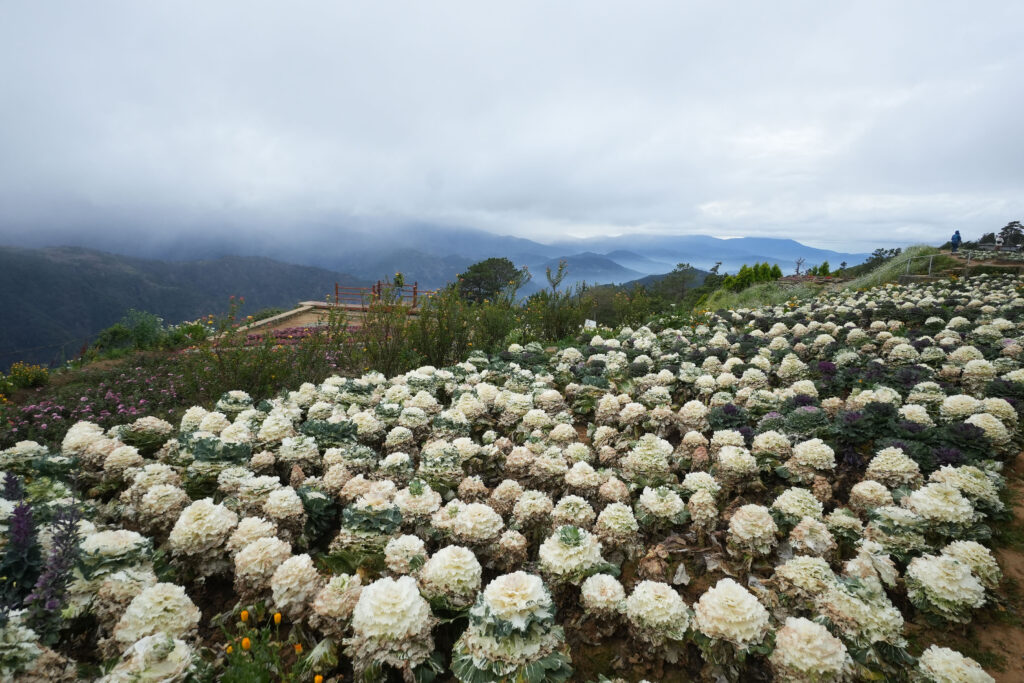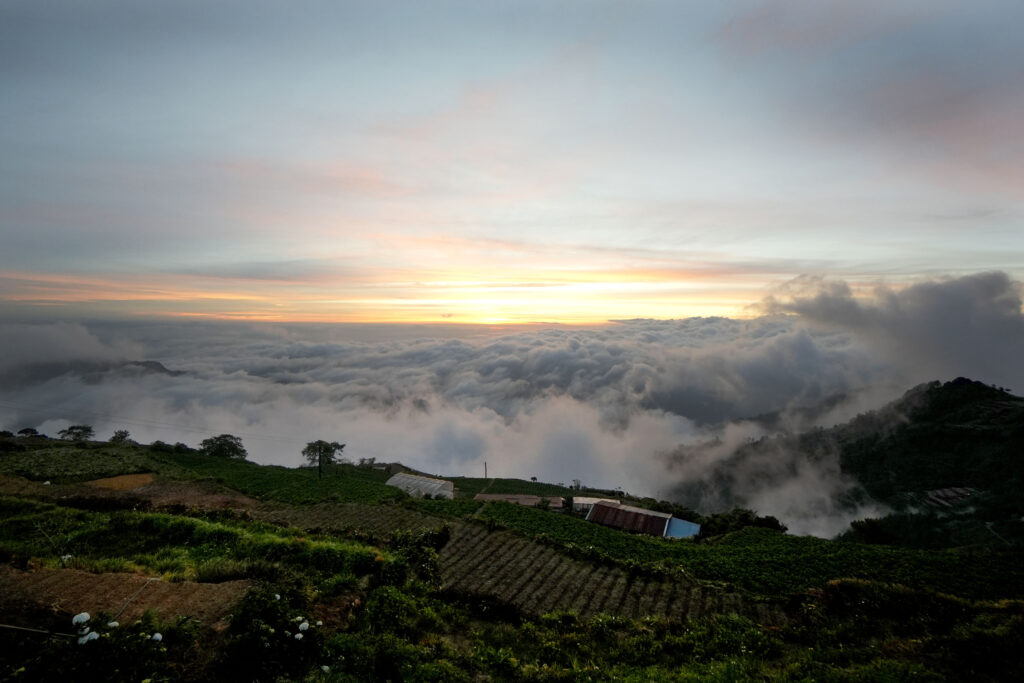Text by Henrylito D. Tacio
Photos by Rhoy Cobilla
“Flowers are the sweetest things God ever made, and forgot to put a soul into,” noted Henry Beecher. “Earth laughs in flowers,” Ralph Waldo Emerson wrote in Hamatreya. Emma Goldman declared, “I’d rather have roses on my table than diamonds on my neck.”
Because of their varied and colorful appearance, flowers have long been a favorite subject of visual artists as well. Some of the most celebrated paintings from well-known painters are of flowers, such as Van Gogh’s sunflower series or Monet’s water lilies. Flowers are also dried, freeze dried, and pressed in order to create permanent, three-dimensional pieces of flower art.
Flowers have meanings, particularly the kind of flower, the number and the color. They can say love during courtship and weddings, console in sorrow, congratulate in achievement, and celebrate friendship.
Flowers are used during funerals as and as expressions of sympathy for the grieving family. In countries such as Belgium and Austria, the chrysanthemum is used almost exclusively as a memorial on graves.
“The Chinese and Japanese have a long established language of flowers,” howstuffworks.com says. “Flowers helped the people of ancient Egypt, Greece, and Rome express their feelings. In the West, Charles XII introduced the language of flowers when he returned from exile in Turkey in 1714.”
In some instances, a flower may represent a country. In the floral word, the rose is king as it is revered in poetry, film, theatre and music. So much so that rose is not surprising to be the national flower of the United States, the United Kingdom and Maldives.
The Philippines has two flower icons. The original one is sampaguita, which is actually a native of India. The other one is waling-waling, an endemic orchid which used to grow profusely in the forests of Mount Apo, the country’s highest peak.
France has iris, also called fleur-de-lis; it comes in more than 200 different colors, ranging from snow white to deep purple. Finland and Yugoslavia share the same national flower: lily of the valley. Holland, Hungary and Turkey have chosen tulips as their national flower.
For Pakistan and Syria, the flower that represents them is jasmine, whose pure white color symbolizes purity and peace. Sunflower is the national flower of Ukraine, while its orchids for Hong Kong and Honduras. Japan has two flower emblems: chrysanthemum and cherry blossom.
At least two cities in the country celebrate flower festivals. Panagbenga is an annual flower festival celebrated every February in Baguio City. The term comes from a Kankanaey term meaning “season of blooming.”
In Davao City, flowers – along with fruits and other produce from the farm – are displayed during the Kadayawan sa Dabaw every August. The week-long celebration ends with Pamulak sa Kadayawan, a parade of various flowers grown in the city and is patterned after the Rose Parade of Pasadena, California in the United States.
Flowers are mentioned in the Bible often as a reference for analogies and parables. Isaiah 40:8 states: “The grass withers, the flower fades, but the word of God will stand forever.” Luke 12:27 also said, “Consider how the wild flowers grow. They do not labor or spin. Yet I tell you, not even Solomon in all his splendor was dressed like one of these.”
Where flowers are grown extensively, expect people to visit the place. Such is the town of Atok – derived from the Ibaloi phrase “Nay Patok Shi Chontog” which means “on the mountain top” – in Benguet. Situated in high elevations, it is a perfect place and climate for coffee farming.
Established in 1900 and despite its small population (over 19,000 residents), it’s a must-see destination for its flower farms and breathtaking scenery. The best time to visit the town is from January to April when the cabbage roses are in full bloom.
To avoid too many people at the Northern Blossom Flower Farm, visit the place on weekdays. About one hour and a half from Baguio City, it is open to the public from 6 in the morning until 5:30 in the afternoon.
Atok is one of the coldest places in the country. It is said that the temperature in the place can drop to zero degrees, causing some crops to be covered with frost. So, bring your jacket when visiting the place.
Upon entering the town, you get a glimpse of both Mount Pulag – the highest peak of Luzon – and Mount Timbak. Both mountains serve as scenic backdrops that make the flower farms really enthralling.
I may not have been to the place yet, but my friend, photographer Rhoy Cobilla did. Look at the photographs he had taken during his recent visit; they are totally mesmerizing and captivating.
Unknowingly, hundreds of fresh flowers are edible but few are widely marketed as food. As one chef puts it: “One of the best things about edible flowers is that they transform ordinary food into a dazzling creation. Their colors add vibrancy, and the flavors add zest to any dish.”
Oftentimes, flowers are used to add color and flavor to salads. Squash flowers, for instance, are dipped in breadcrumbs and fried. Edible flowers include chrysanthemum, carnation, chicory, and sunflower. Some edible flowers are sometimes candied such as daisies.


Most people might not know this, but roses are edible and as with many edible flowers, they actually are quite tasty! Some claim they taste like a sweet apple fruit and others fail to be able to describe the taste of a rose. There are many recipes for the use of roses, but a favorite is always candied rose petals, which are a great confection to decorate cookies, cakes and puddings.
Do you know that you can make an omelet out of gumamela leaves? This has been discovered in a study on ornamental plants conducted by researchers from the University of the Philippines at Los Baños (UPLB).
“Most ornamental plants are also rich in vitamins and minerals,” said Dr. Gregorio Lugod and Dr. Ludivina de Padua of the UPLB Department of Botany, who conducted the laudable study.
Gumamela is very common in many gardens, but it is mostly used to adorn table tops or a girl’s hair. Unknown to many, the shrub’s flowers and leaves can now be eaten as food. The UPLB researchers said that gumamela can provide the body with starch, glycogen, calcium oxalate, sulfur and pectic substances to prevent colds, cancer, and ulcer.
The petals of gumamela flowers can be pickled or even made as jelly. The flower buds and leaves can also be prepared into a vegetable salad, as an omelet (fried with scrambled egg) or as a sautéed vegetable dish. In Mexico, gumamela flowers are used to make jamaico, a cool drink infusion perfect for refreshment on a hot summer’s day and flavor ice cream and sorbet.
Roselle, a relative of the gumamela, can supply the body with vitamin A, thiamine, riboflavin, niacin and ascorbic acid. Lack of these substances in the body, especially niacin, causes loss of appetite, nervousness, redness of the tongue, skin discoloration and mental depression.
The red and fleshy calyces (outer petals) of roselle flowers can be made into wine and jellies. In addition, the young leaves can be used as substitute for spinach, or may be cooked with fish or meat in making sinigang.
On the other hand, the young leaves of alibangbang (called so because the leaves look like butterflies) can be eaten raw or cooked in soups, stews and meat or fish dishes. Its flowers and buds can also be pickled. The leaves, flowers, and buds contain starch, glycogen, hydrocellulose, fats, tannin, saponin, protein and calcium oxalate needed to make the human body fit and strong.
Yes, flowers are not only for appreciation but consumption as well!

